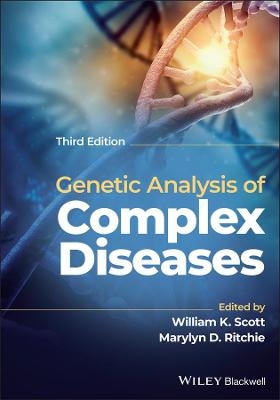
Genetics and Genomics in Nursing
(Previously known as Human Genetics in Nursing)
Seiten
2016
|
3rd Revised edition
Jaypee Brothers Medical Publishers (Verlag)
978-93-85999-20-8 (ISBN)
Jaypee Brothers Medical Publishers (Verlag)
978-93-85999-20-8 (ISBN)
- Keine Verlagsinformationen verfügbar
- Artikel merken
Covers the six broad domains of genetic and genomic nursing. Basic Concept of Molecular Genetics; Emerging Paradigm of Genetics in Nursing; Maternal and Prenatal Genetics; Genetic Testing in the Neonates and Children; Genetic Conditions of Adolescents and Adults; and Services Related to Genetics.
Genetics and Genomics in Nursing covers the most desired areas of genetic and genomic nursing as prescribed in the nursing curriculum. This textbook covers the following six broader domains of genetic and genomic nursing.
1. Basic Concept of Molecular Genetics: This chapter covers the entire breadth and depth of molecular genetics covering details on the basic introduction of genetics, basic terminology related to molecular genetics, review of cellular division, structure and characteristics of genes, DNA, RNA and chromosomes, protein synthesis, genetic code, chromosomal aberrations, gene mutation, mechanism of inheritance, laws of inheritance and patterns of inheritance, including autosomal dominant, autosomal recessive, sex-linked and nonmendelian patterns of inheritance, such as codominant pattern, mitochondrial pattern and multifactorial pattern of inheritance. It is also provides the details of multiple allots and blood groups, reduced penetrance, variable expressivity, anticipation, practical applications of genetics in nursing, impact of genetic conditions on families, factors influencing the impact of genetic conditions of families and role of nurses in managing the impact of genetic conditions on families.
2. Emerging Paradigm of Genetics in Nursing: This chapter enumerates the details on milestones achieved by genetic nursing, role of nurses in genetics, importance of genetics in nursing curriculum, barriers and approaches for the implementation of genetics in nursing and assumptions regarding genetics and healthcare in future.
3. Maternal and Prenatal Genetics: This chapter covers the content on areas related to maternal and prenatal genetics, such as maternal infections and fetal genetic consequences, genetic aspect of consanguinity, prenatal nutrition and food allergies in children, role of prenatal nutrition in the prevention of genetic disorders in children, genetic aspect of advanced maternal and parental age, genetic effect of maternal drug therapy on pregnancy and fetus, genetic consequences of maternal exposure to radiation, chemical and illicit drugs, prenatal testing and diagnosis including ultrasound, fetal echocardiography, fetal radiology, amniocentesis, chorionic villus sampling, fetal blood sampling, maternal blood sampling, fetal tissue sampling, fetoscopy, and preimplantation and prenatal testing. This chapter also covers the infertility, spontaneous abortion, neural tube defect and Down’s syndrome from a genetic point of view. The role of nurses in each of the above mentioned maternal and prenatal genetic conditions and testing is precisely covered in this chapter.
4. Genetic Testing in the Neonates and Children: Many of the genetic disorders, if identified in newborns and early childhood, may prevent the individual from experiencing the symptoms of that particular genetic disease or complications with adaption of preventive measures. This chapter covers the meaning and purposes of neonatal screening/genetic testing, important elements of newborn screening, common disorders screened in newborns, approaches of genetic testing and screening in children. The meaning, genetic causes, tools and methods of genetic screening, medical management and nurses’ role in congenital abnormalities, developmental delay and dysmorphism are also precisely covered in this chapter. This chapter also includes the role of nurses in genetic testing for neonates and children.
5. Genetic Conditions of Adolescents and Adults: Recently, many diseases were found to have genetic predisposition. However, this chapter has covered only selected core genetic conditions, such as cancer genetics—familial cancer, inborn errors of metabolism, hematological genetic disorders, genetic hemochromatosis, Huntington’s disease and mental illnesses with genetic predisposition. It also covers the therapeutic approaches used for the medical management and nursing management in genetic disorders.
6. Services Related to Genetics: This chapter covers the details of genetic testing, different types of genetic testing, genetic test techniques, interpreting genetic test results, ethical, legal and social issues in genetic testing and role of nurses in genetic testing, human genome project, nursing and human genome project, genomic era, gene therapy, role of nurses in gene therapy, eugenic movement, genetic counseling, role of nurses in genetic counseling and pharmacogenomics.
Genetics and Genomics in Nursing covers the most desired areas of genetic and genomic nursing as prescribed in the nursing curriculum. This textbook covers the following six broader domains of genetic and genomic nursing.
1. Basic Concept of Molecular Genetics: This chapter covers the entire breadth and depth of molecular genetics covering details on the basic introduction of genetics, basic terminology related to molecular genetics, review of cellular division, structure and characteristics of genes, DNA, RNA and chromosomes, protein synthesis, genetic code, chromosomal aberrations, gene mutation, mechanism of inheritance, laws of inheritance and patterns of inheritance, including autosomal dominant, autosomal recessive, sex-linked and nonmendelian patterns of inheritance, such as codominant pattern, mitochondrial pattern and multifactorial pattern of inheritance. It is also provides the details of multiple allots and blood groups, reduced penetrance, variable expressivity, anticipation, practical applications of genetics in nursing, impact of genetic conditions on families, factors influencing the impact of genetic conditions of families and role of nurses in managing the impact of genetic conditions on families.
2. Emerging Paradigm of Genetics in Nursing: This chapter enumerates the details on milestones achieved by genetic nursing, role of nurses in genetics, importance of genetics in nursing curriculum, barriers and approaches for the implementation of genetics in nursing and assumptions regarding genetics and healthcare in future.
3. Maternal and Prenatal Genetics: This chapter covers the content on areas related to maternal and prenatal genetics, such as maternal infections and fetal genetic consequences, genetic aspect of consanguinity, prenatal nutrition and food allergies in children, role of prenatal nutrition in the prevention of genetic disorders in children, genetic aspect of advanced maternal and parental age, genetic effect of maternal drug therapy on pregnancy and fetus, genetic consequences of maternal exposure to radiation, chemical and illicit drugs, prenatal testing and diagnosis including ultrasound, fetal echocardiography, fetal radiology, amniocentesis, chorionic villus sampling, fetal blood sampling, maternal blood sampling, fetal tissue sampling, fetoscopy, and preimplantation and prenatal testing. This chapter also covers the infertility, spontaneous abortion, neural tube defect and Down’s syndrome from a genetic point of view. The role of nurses in each of the above mentioned maternal and prenatal genetic conditions and testing is precisely covered in this chapter.
4. Genetic Testing in the Neonates and Children: Many of the genetic disorders, if identified in newborns and early childhood, may prevent the individual from experiencing the symptoms of that particular genetic disease or complications with adaption of preventive measures. This chapter covers the meaning and purposes of neonatal screening/genetic testing, important elements of newborn screening, common disorders screened in newborns, approaches of genetic testing and screening in children. The meaning, genetic causes, tools and methods of genetic screening, medical management and nurses’ role in congenital abnormalities, developmental delay and dysmorphism are also precisely covered in this chapter. This chapter also includes the role of nurses in genetic testing for neonates and children.
5. Genetic Conditions of Adolescents and Adults: Recently, many diseases were found to have genetic predisposition. However, this chapter has covered only selected core genetic conditions, such as cancer genetics—familial cancer, inborn errors of metabolism, hematological genetic disorders, genetic hemochromatosis, Huntington’s disease and mental illnesses with genetic predisposition. It also covers the therapeutic approaches used for the medical management and nursing management in genetic disorders.
6. Services Related to Genetics: This chapter covers the details of genetic testing, different types of genetic testing, genetic test techniques, interpreting genetic test results, ethical, legal and social issues in genetic testing and role of nurses in genetic testing, human genome project, nursing and human genome project, genomic era, gene therapy, role of nurses in gene therapy, eugenic movement, genetic counseling, role of nurses in genetic counseling and pharmacogenomics.
| Erscheinungsdatum | 26.10.2020 |
|---|---|
| Zusatzinfo | images |
| Verlagsort | New Delhi |
| Sprache | englisch |
| Maße | 140 x 203 mm |
| Gewicht | 425 g |
| Themenwelt | Studium ► 2. Studienabschnitt (Klinik) ► Humangenetik |
| Studium ► 2. Studienabschnitt (Klinik) ► Pathologie | |
| ISBN-10 | 93-85999-20-6 / 9385999206 |
| ISBN-13 | 978-93-85999-20-8 / 9789385999208 |
| Zustand | Neuware |
| Informationen gemäß Produktsicherheitsverordnung (GPSR) | |
| Haben Sie eine Frage zum Produkt? |
Mehr entdecken
aus dem Bereich
aus dem Bereich
Eine sehr persönliche Geschichte | Der New York Times-Bestseller
Buch | Softcover (2023)
Ullstein Taschenbuch Verlag
21,99 €
Die revolutionäre Medizin von morgen (Lifespan)
Buch | Softcover (2020)
DuMont Buchverlag
16,00 €


